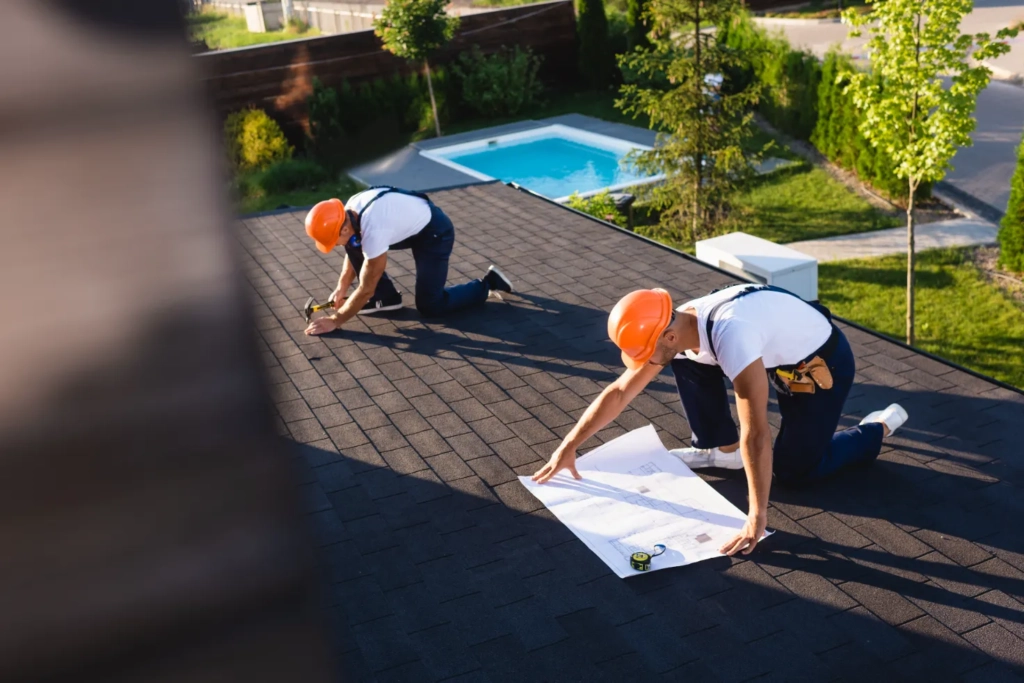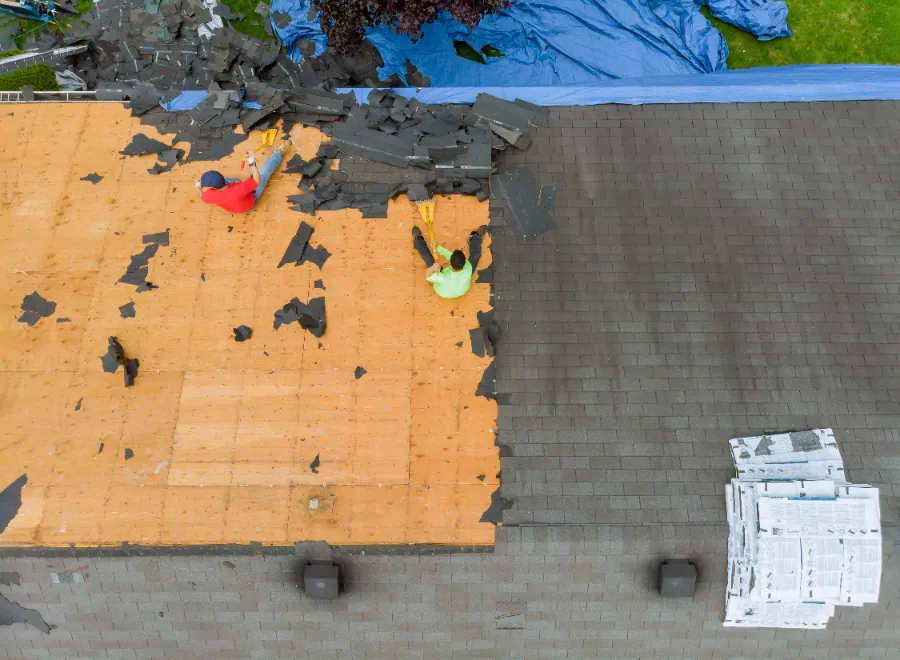Commercial roof replacement is one of the most significant capital expenditures for any property owner or facility manager. Without proper planning, it can also be one of the most unpredictable. From hidden structural issues to sudden material price hikes, costs can spiral out of control quickly if you don’t have a strategy in place. This guide outlines how to create a realistic and informed budget that minimizes surprises and sets your project up for long-term success.
Understanding the Full Scope of a Commercial Roof Replacement
Replacing a commercial roof isn’t just about removing old materials and installing new ones; it’s also about ensuring the new materials are compatible with the existing structure. The process often involves structural assessments, tear-off procedures, insulation upgrades, waterproofing measures, and permits. Knowing the scope of work involved helps you avoid underestimating what’s needed, both financially and logistically.
Why Getting a Detailed Commercial Roof Inspection Matters Before Budgeting
Before you start crunching numbers, it’s crucial to understand the condition of your current roofing system. A comprehensive inspection provides a clear baseline, identifying any damage, moisture intrusion, or code violations that will influence replacement costs. Without it, your budget is built on guesswork and vulnerable to surprise change orders.
Uncovering Hidden Damage Early
Roof inspections often reveal underlying issues, such as mold, wet insulation, or rot in the decking. Addressing these during planning avoids costly disruptions mid-project. Early detection also helps preserve the structural integrity of the entire roofing system.
Measuring Existing Drainage and Slope
A professional inspection also evaluates roof slope and drainage systems. Poor drainage can necessitate re-engineering, which increases the costs of labor and materials. Ensuring proper slope and water flow helps prevent future leaks and water damage.
Factoring in the Type of Roofing System for Your Commercial Roof Replacement
Not all commercial roofing systems are created equal, and neither are their price tags. Options like TPO, EPDM, modified bitumen, or metal all come with different material costs, installation complexities, lifespans, and maintenance requirements. Selecting the right system for your building and climate will influence both your upfront investment and long-term ROI. Consulting with a roofing professional can help you weigh these factors and choose the most cost-effective solution.
Labor Costs Are a Major Part of Commercial Roof Replacement
Labor isn’t just a line item—it’s often one of the most significant portions of your budget. Highly skilled crews are essential to ensure correct installation and compliance with manufacturer warranties. Rates can vary depending on region, time of year, and current demand in the construction market.
Understanding Union vs. Non-Union Crews
In some markets, union labor comes with higher rates but increased training and safety oversight. Know which applies to your area and plan accordingly. Understanding these differences can also help you evaluate the overall value and quality of work you’re paying for.
Seasonal Labor Demand Impacts Pricing
Busy seasons, such as late spring and summer, can lead to increased labor rates. Scheduling during off-peak times may help reduce overall costs. Planning ahead for an off-season project can also give you more flexibility in selecting experienced crews.
Commercial Roof Replacement Permits and Code Upgrades
One of the most overlooked parts of the commercial roof replacement process is compliance with local codes. Depending on the scope of your project, you may be required to upgrade insulation, change flashing designs, or add safety features. These upgrades—along with city permits and final inspections—should be built into your budget from the start. Factoring them in early helps prevent delays and unexpected expenses later in the project.
Why You Need a Contingency Fund in Every Commercial Roof Replacement Budget
Even with detailed estimates and thorough inspections, surprises can still happen. A section of decking may be too damaged to reuse, or adverse weather conditions may extend the project timeline. A contingency fund acts as your financial cushion, helping you stay on track without scrambling for last-minute approvals or emergency funding.
Standard Contingency Percentage
It’s common to reserve 10–15% of your total project cost for unforeseen issues. This helps manage risk without unnecessarily inflating your budget. Having this cushion ensures you can address problems quickly without halting progress.
Contingencies Also Cover Delays
Time is money on commercial projects. Weather, supplier delays, or labor shortages can increase costs without this buffer in place. A well-planned contingency allows schedules to be adjusted without derailing the entire project.
Why Material Prices Fluctuate in Commercial Roof Replacement Projects
Roofing materials, like most construction commodities, are subject to market fluctuations. Everything from oil prices to supply chain bottlenecks can cause price volatility in membranes, fasteners, sealants, and insulation boards. Getting quotes early and locking in pricing through your contractor can help protect your budget against future price increases.
Evaluating Warranty Options in Your Commercial Roof Replacement
Warranties are more than just paperwork—they represent long-term value and peace of mind. Extended warranties may increase your upfront cost, but they can reduce your maintenance burden over time. Understanding what is covered, for how long, and under what conditions allows you to make an informed decision and budget appropriately.
Manufacturer vs. Contractor Warranties
Manufacturer warranties cover materials, while contractor warranties handle workmanship. Budgeting for both ensures complete coverage. Understanding the terms of each warranty can help you avoid unexpected expenses later.
What Voids a Warranty Matters
Improper maintenance or unauthorized repairs can void your warranty. Setting aside funds for proper upkeep protects your investment. Following the manufacturer’s care guidelines will help you maintain eligibility for coverage.
How Roof Access Affects Budgeting for Commercial Roof Replacement
The ease—or difficulty—of accessing your roof plays a direct role in the overall cost. Buildings with tight perimeters, multiple stories, or rooftop equipment will require additional planning, safety gear, and potentially cranes or lifts. These logistical factors are easy to overlook but can quickly eat into your budget if not considered up front.
Disposal and Cleanup Costs in Commercial Roof Replacement Add Up Quickly
Removing an old commercial roof creates a significant amount of waste. Dumping fees, container rentals, labor for tear-off and cleanup, and even environmental compliance costs need to be factored in. Failing to account for this stage can leave you with a budget shortfall once the replacement is already underway.
Recycling Can Offset Disposal Costs
Some materials, like metal panels or membrane rolls, can be recycled. This may reduce landfill fees and even qualify for rebates in some regions. Partnering with a certified recycling facility ensures materials are processed responsibly and in compliance with local regulations.
Hazardous Material Handling Is More Expensive
If your roof contains asbestos or other hazardous materials, specialized removal and disposal must be factored into your estimate. These procedures require licensed professionals and strict safety measures, which can significantly increase project costs.
Plan for Business Disruption Costs During Commercial Roof Replacement
Even if your roofing contractor works quickly and efficiently, commercial roof replacement can still disrupt daily operations. Noise, vibrations, restricted access, or even temporary closures may affect tenants or employees. You should account for these indirect costs in your budget so that you can plan effectively for business continuity. Proactively communicating the schedule and potential impacts can help minimize inconvenience for everyone involved.

How the Right Contractor Helps Budget Commercial Roof Replacement
An experienced commercial roofing contractor not only delivers quality work but also provides realistic timelines and cost expectations. They understand the local permitting process, material sourcing options, and labor requirements—and they help you anticipate what’s needed. A contractor who communicates clearly and presents line-item estimates will help you avoid scope creep and hidden fees.
Beware of Lowball Estimates
The lowest bid often excludes key items, such as flashing, insulation, or warranty coverage. Transparent contractors help you understand what their quote includes. Reviewing estimates in detail can prevent surprise expenses once work begins.
Look for Value, Not Just Price
Investing more upfront in better materials or skilled labor can extend the lifespan of your new roof and reduce future maintenance costs. Prioritizing quality ensures long-term savings and improved performance.
Long-Term Maintenance Planning for Your Commercial Roof Replacement Budget
Budgeting for a roof replacement shouldn’t stop at installation. You’ll want to allocate funds for regular inspections, debris removal, and minor repairs to keep your roof in peak condition. Planning for these costs helps preserve your warranty, reduces future repair bills, and extends the life of your investment.
Build a Smart Commercial Roof Replacement Budget With Confidence
Preparing for a commercial roof replacement isn’t just about collecting quotes—it’s about building a comprehensive financial strategy. From permitting and materials to warranties and waste removal, every piece plays a role in your final price. Take a proactive and informed approach, partner with the right professionals, and budget for the job you need. You can then navigate this complex process with fewer surprises and better outcomes for your building’s future.
Check out our NorthCoast Roofing Inc. blog to learn more about the roof replacement process and other ways to maintain your home.

